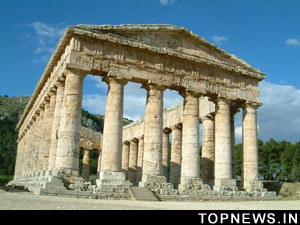Doric temples and buffalo mozzarella in Italy's Cilento region
 Paestum, Italy - Italy's Cilento region, south of Naples, is a beloved destination of tourists, but not overrun by them. Its attractions include long beaches, extensive vineyards, sleepy villages and mountains about 1,700 metres high.
Paestum, Italy - Italy's Cilento region, south of Naples, is a beloved destination of tourists, but not overrun by them. Its attractions include long beaches, extensive vineyards, sleepy villages and mountains about 1,700 metres high.
In 1991, part of the region became Cilento and Vallo di Diano National Park. UNESCO, the United Nations' cultural body, added the park - including the archaeological site of Paestum - to its World Heritage list seven years later.
The park's visitors are spoilt for choice. They can hike, go for a swim or engage in cultural pursuits. Tourists who do not want to stay in one of the beach hotels or at a campground can find comfortable lodgings in the mountains, where many olive, grape and vegetable farmers rent out rooms and holiday apartments.
Among the little holiday oases is Roccadaspide, just a half hour's drive from Paestum and the Tyrrhenian Sea. Dominating the town centre is an old castle, in front of which lies a small piazza complete with a fountain and cafes. Below the town, farmers tend their vineyards and olive trees.
But a lot more than that grows in Cilento, including figs, tomatoes, eggplants, chestnuts and lemons. The region has about 1,800 different species of plants in all, and about 10 per cent of the flora can be found nowhere else in Italy.
In summer, tubs filled with tomatoes stand outside the farms - the farmers preserve them for the winter. Other farmers make their own olive oil, salami or cheese.
The region's "mozzarella di bufala" or buffalo mozzarella, is famous. Around the town of Paestum alone are dozens of mozzarella factories where visitors can not only buy the white pasta filata cheese, but also watch how it is produced.
Water buffalo have been kept in the region for centuries. Some farmers own hundreds of the black cattle, for which they often dig a large pond where the animals can wallow during the hot months of summer.
The archaeological site of Paestum and nearby town lie on the southern bend of the Gulf of Salerno. The site's ensemble of Doric temples from classical antiquity make it one of the region's most popular tourist attractions. The best-known ruins are of the Temple of Ceres, which was dedicated to the goddess Athena.
Just a few hundred metres from the archaeological site are hotels, campgrounds and the sea. The town of Paestum is a classic seaside resort with bars and restaurants.
Tourists, who find the shore too crowded, can go to the mountains for a swim - in the Calore River. Tables and benches stand alongside the refreshingly cool water, and anglers try their luck. In summer, children build little pools with stones, and families have picnics in the virgin forest.
Internet: www. enit-italia. de, www. cilentoturismo. it. (dpa)